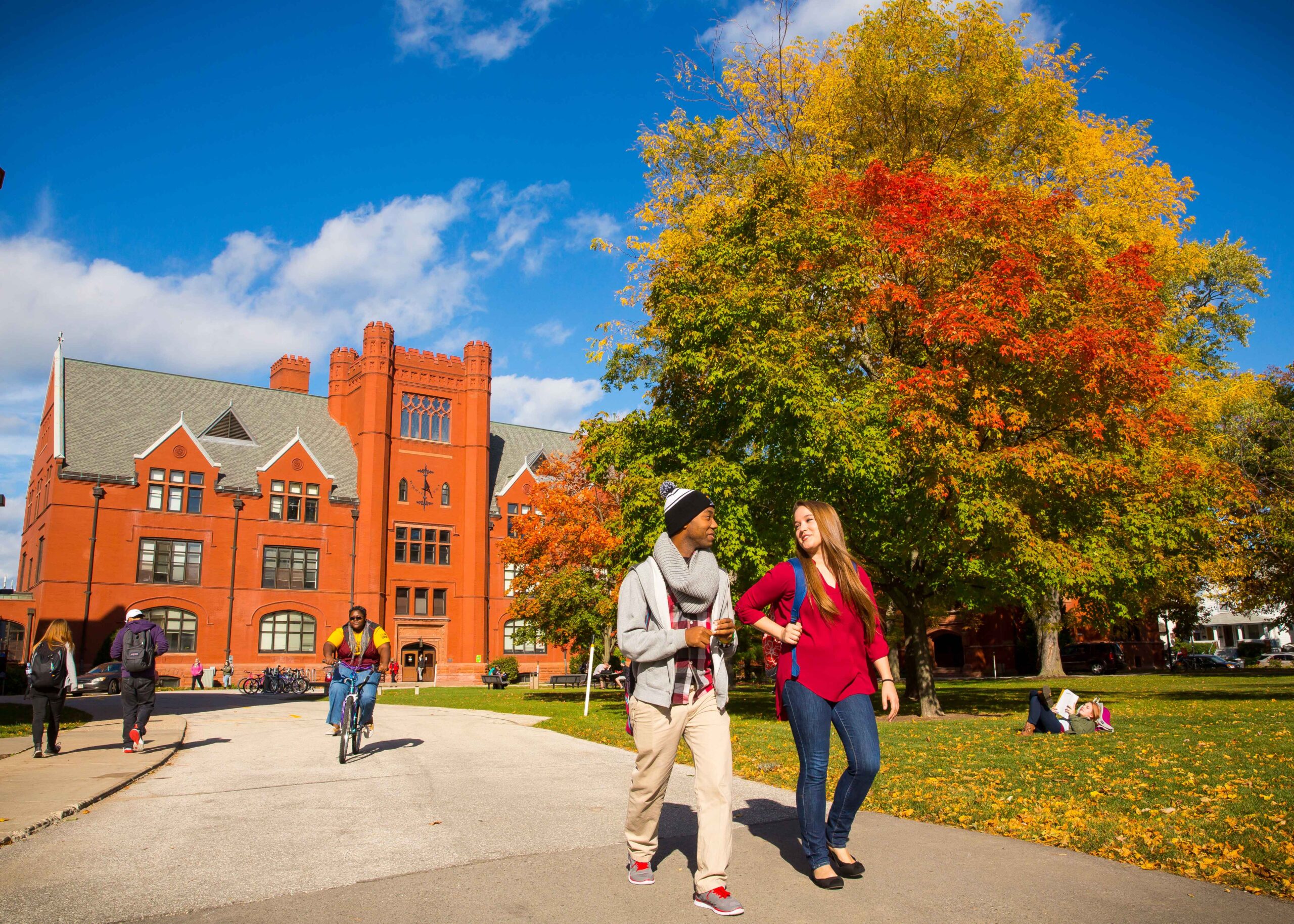College students are known to be strapped for time. A May 2024 Student Voice survey by Inside Higher Ed found the No. 1 stressor in students’ lives is balancing academics with personal, family or financial responsibilities such as work.
Research shows campus involvement is tied to students’ retention, career development and sense of belonging while in college, but helping time-strapped students access these experiences can be a challenge for institutions.
This year, Goucher College in Maryland created a new forum through the office of Community-Based Learning. The short-term micro-experiences allow students to dip their toes into service without committing to a semester or longer. The college first piloted the unpaid opportunities in spring 2024, and student participation in service learning has increased as a result.
The background: The Office of Community-Based Learning offers seven focus areas for community engagement: animal welfare, empowering ability, environmental sustainability, food and housing security, K-12 education and youth development, immigrant and refugee programs, and health and wellness.
Participation could include off-campus Federal Work-Study roles, volunteering with a social justice student club or through a campus organization, taking a Community-Based Learning course, engaging in an internship, or serving as a student director. The office also partners with faculty members to provide experiences in the classroom, such as a semester-long project for a nonprofit partner or a field trip to a partner site.
One of the reasons CBL has previously not offered short-term or one-day service opportunities is because of ethical concerns of how impactful these experiences are for the organizations or individuals being served.
The change is reflective of the needs of today’s students, who are more likely to be working for pay or on a compressed timeline to complete their undergraduate program as quickly as possible, CBL director Lindsay Johnson Walton said.
To ask students to invest in a long-term program that requires three, four or five semesters’ worth of time, “it’s not practical,” she said.
On the other side, nonprofit and community partners can be so desperately in need of support that they hold fewer concerns about the model of service. “It doesn’t matter if it’s the same students as long as it’s engaged students,” Johnson Walton explained.
Offering short-term participation opportunities requires more work from the college to generate the experience and fill out paperwork because it only happens once, but Johnson Walton hopes with future iterations the process will become more streamlined.
How it works: CBL offers around one micro-experience per week, many taking place on a Saturday morning or afternoon. Each experience has a cap of 10 to 12 students.
Students sign up in advance and commit to volunteering for a few hours. College staff handle logistics, including transportation, covering background checks and coordinating with the site, so students just have to show up and serve. Student coordinators, who are part-time staff working for CBL, also contribute to the organization and execution of events.
Some experiences that work well as short-term offerings include volunteering at the food bank or assisting at an animal shelter, while other partners, such as public schools, still operate best with more sustained interactions.
On the trip back, staff lead a short debrief and guided reflection to help students connect their experiences to larger learning objectives and provide additional opportunities to learn or serve, if needed. Students are also sent a short questionnaire that asks them to reflect on their work.
Short-Term Experiential Learning Grows
Community-based learning isn’t the only area where Goucher College has shortened the duration of experiential learning opportunities.
In 2020, Goucher launched micro-internships for students, primarily to address a lack of offerings available to students due to the COVID-19 pandemic. The remote offerings help connect students with alumni and other college partners and give students a project to assist in their career development and growth.
Similarly, the global education office has seen a growth in student interest for three- to five-week study abroad offerings rather than semester-long programs.
Who’s doing it: The micro-experiences have attracted a wide variety of students, some who are curious about service learning and just want to dip their toes in. International students often fall into this category because volunteering can be a uniquely American experience, and the projects give them insight into different organizations and spaces they may not otherwise engage in, such as schools, Johnson Walton said.
Others have a passion for service but are unable to devote much time to it, so micro-experiences provide a flexible opportunity.
Many students had a service requirement while in high school or were told that volunteering is a good feature for their college application, which makes service more of a reflex, Johnson Walton said. “They think they should be doing it, because culturally it’s been built into the list of things you’re supposed to do.”
Each of these students reflects an opportunity to further engage them in longer-term community-based learning in a curricular or co-curricular setting.
Feedback from participants shows that even small or short projects can have an impact on the student. At a volunteer appreciation event, one student wrote they learned how to plant a tree, which is a simple action, but one that can help a lot of people and a skill they can take and use again and again, Johnson Walton said.
Similarly, sorting food at the food bank can seem insignificant, but recognizing how many people that food will feed can help students gain perspective on their service impact.
For organizers of community-based learning experiences, it can be hard to grapple with the potential harm done by short-term community service because of the power dynamics involved, but Johnson Walton has learned that allowing students to get out and do can be a great first start to thoughtful and intentional service.
Seeking stories from campus leaders, faculty members and staff for our Student Success focus. Share here.



